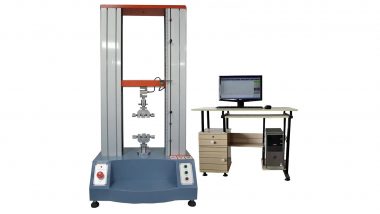The automotive harness is the main body of the automotive circuit network. Without a harness, there will be no automotive circuit. Wire harness refers to the contact terminal (connector) made of copper and crimped with wire and cable, and then molded and pressed insulator or external metal shell to bind the wire harness to form a component connecting the circuit. The harness industry chain includes wire and cable, connector, processing equipment, harness manufacturing, and downstream application industries. The harness is widely used in automobiles, household appliances, computers and communication equipment, various electronic instruments and meters, etc. the body harness connects the whole body in an H-shape.
Commonly used
The common specifications of wires in the automotive harness include wires with nominal cross-sectional areas of 0.5, 0.75, 1.0, 1.5, 2.0, 2.5, 4.0 and 6.0 mm2 (the nominal cross-sectional areas commonly used in Japanese vehicles are 0.5, 0.85, 1.25, 2.0, 2.5, 4.0 and 6.0 mm2). They all have allowable load current values and are equipped with wires for electric equipment with different powers. Taking the whole vehicle harness as an example, the 0.5 specification line is applicable to instrument lights, indicator lights, door lights, ceiling lights, etc; 0.75 specification line is applicable to license plate lamps, front and rear small lamps, brake lamps, etc; 1.0 specification line is applicable to turn signal lamp, fog lamp, etc; 1.5 the specification line is applicable to headlights, horns, etc; Main power lines such as generator armature line, grounding wire, etc. require 2.5 to 4 mm2 wires. This only means that for ordinary cars, the key depends on the maximum current value of the load. For example, the grounding wire and positive power line of the battery are special car wires used alone. Their wire diameters are relatively large, at least more than ten square millimeters. These “Big Mac” wires will not be incorporated into the main harness.
Array
Before arranging the harness, draw the harness diagram in advance. The harness diagram is different from the circuit schematic diagram. The circuit schematic diagram is an image describing the relationship between various electrical parts. It does not reflect how the electrical parts are connected to each other and are not affected by the size, shape, and distance of various electrical components. The harness diagram must take into account the size and shape of each electrical component and the distance between them, and also reflect how the electrical components are connected to each other.
After the technicians of the harness factory made the harness wiring board according to the harness diagram, the workers cut and arranged the wiring according to the provisions of the wiring board. The main harness of the whole vehicle is generally divided into the engine (ignition, EFI, power generation, starting), instrument, lighting, air conditioning, auxiliary appliances, and other parts, including the main harness and branch harness. A whole vehicle’s main harness has multiple branch harnesses, just like tree poles and branches. The main harness of the whole vehicle often takes the instrument panel as the core part and extends forward and backward. Due to the length relationship or convenient assembly, the harness of some vehicles are divided into the head harness (including instrument, engine, front light assembly, air conditioner, and battery), tail harness (tail lamp assembly, license plate lamp, and trunk lamp), roof harness (door, ceiling lamp, and audio horn), etc. Each end of the harness will be marked with numbers and letters to indicate the connection object of the wire. The operator can see that the mark can be correctly connected to the corresponding wires and electrical devices, which is particularly useful when repairing or replacing the harness. At the same time, the color of the wire is divided into monochrome wire and two-color wire. The purpose of the color is also specified, which is generally the standard set by the car factory. China’s industry-standard only stipulates the main color, such as single black for grounding wire and red for power wire, which can not be confused.
The harness is wrapped with woven thread or plastic adhesive tape. For safety, processing, and maintenance convenience, woven thread wrapping has been eliminated and is now wrapped with adhesive plastic tape. The connection between harness and harness and between the harness and electrical parts adopts connector or lug. The connector is made of plastic and is divided into a plug and socket. The wire harness is connected with the wire harness by the connector, and the connection between the wire harness and electrical parts is connected by connector or lug




